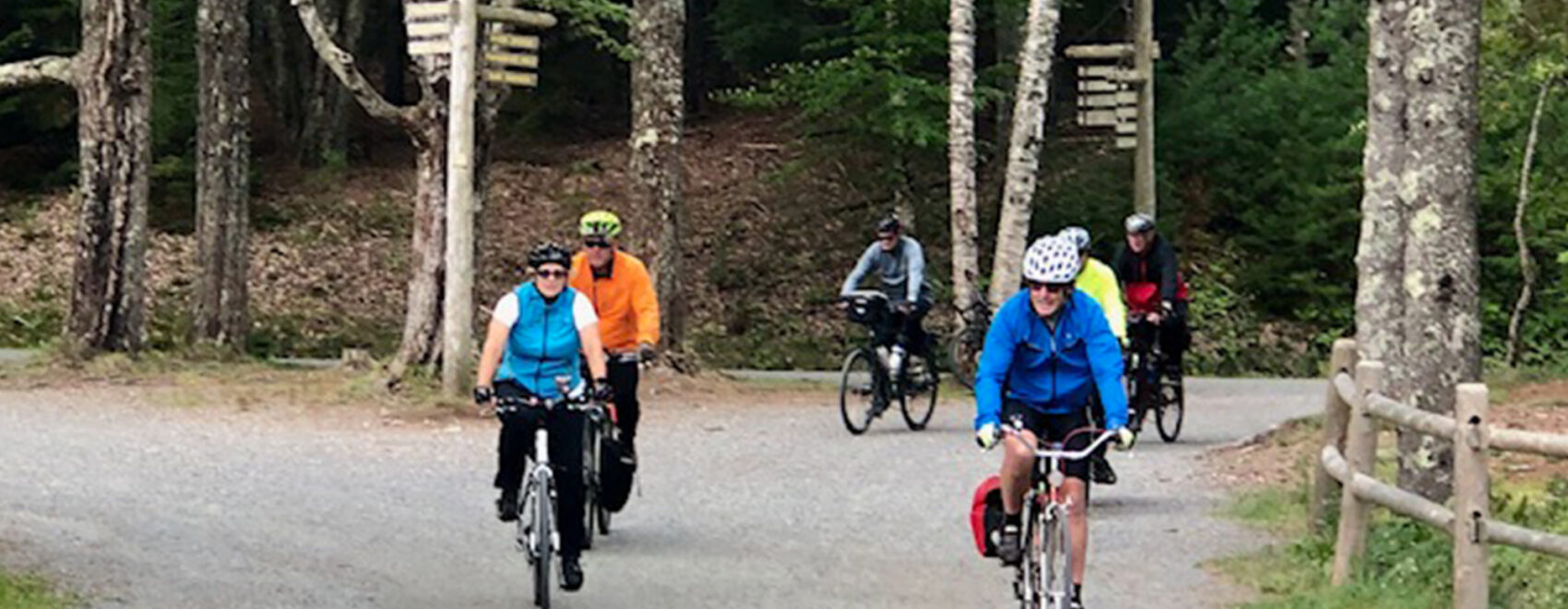As you know from my previous blog, Peter’s 7 Must-Do Travel Tips for Acadia National Park, I mention the some of the many activities you can do, like cycling, hiking, and a variety of watersports – way too much for one blog!. So, today I’m going to give you highlights of the two main cycling roads – The Carriage Roads and the Park Loop Road. It’s significant to mention that the Carriage and Park Loop Roads are what make Acadia National Park unique from most other national parks.
Acadia’s Carriage Road system is considered the finest example of broken-stone roads in America. The vision behind the carriage roads has always been to provide visitor access to the Park interior while preserving its tranquility and beauty. The road, comprising of over 50 miles of roads, with 17 stone bridges and two gatehouses, the carriage road system enables a visitor to travel throughout the Park and enjoy its natural qualities.
Cycling is the best way to quickly access the interior of the Park, discover its scenic beauty, and find a bit of quiet solitude. Start early and spend a full day or two or three!
Here are some essential tips to consider before you embark on the cycling trails:
Visit the Bar Harbor Bicycle Shop: It’s the shop all the locals recommend and offers the type of bike best suited for the carriage roads. A full day is only $40! Haven’t ridden a bike in a while? Don’t worry. It’ll come back to you quickly — just like riding a bike!
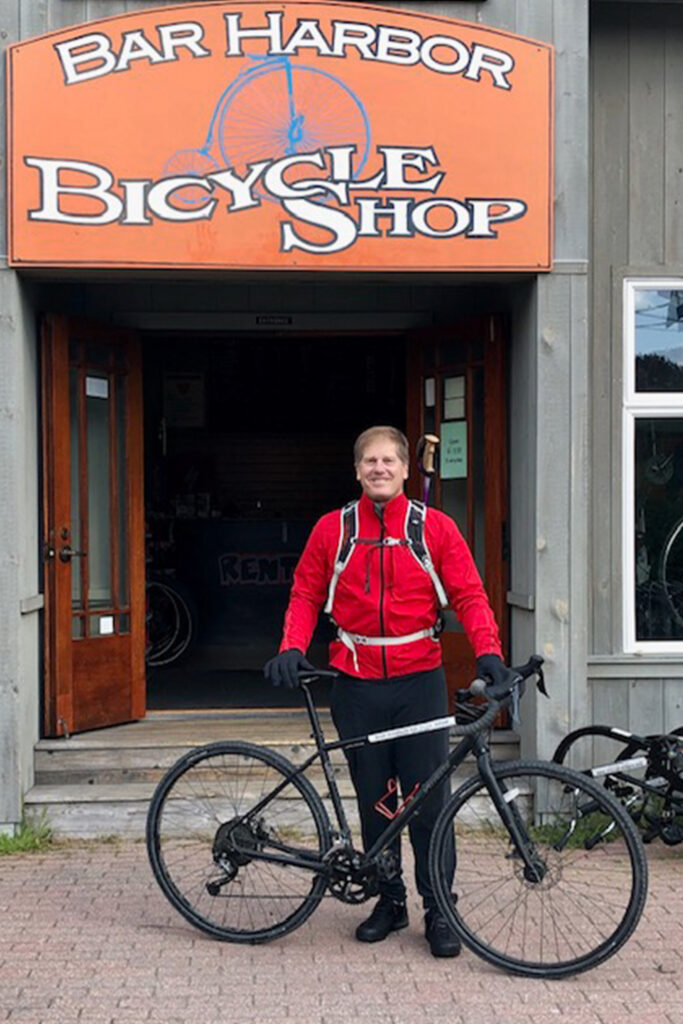
Take Advantage of the Explorer Bus
The bus network is marvelous: free & frequent. It stops at many access points to the carriage road system. You can cycle to Eagle Lake in 15-20 minutes as I did, or alternatively use the Explorer bus network, which departs from the nearby Village Green in the center of Bar Harbor town. Some buses are primarily for cyclists, and their first stop is Eagle Lake. Others are geared to pedestrians but can accommodate up to three bikes.
Planning is a must!
Don’t forget Carriage Roads of Acadia, and A Pocket Guide (Diane Abrett et al.). The Park also provides a convenient carriage road flyer with a 1-page map. Every intersection of the carriage roads has a numerical identifier (from 1 to 38) reflected in the provided trail map. You really can’t get lost.
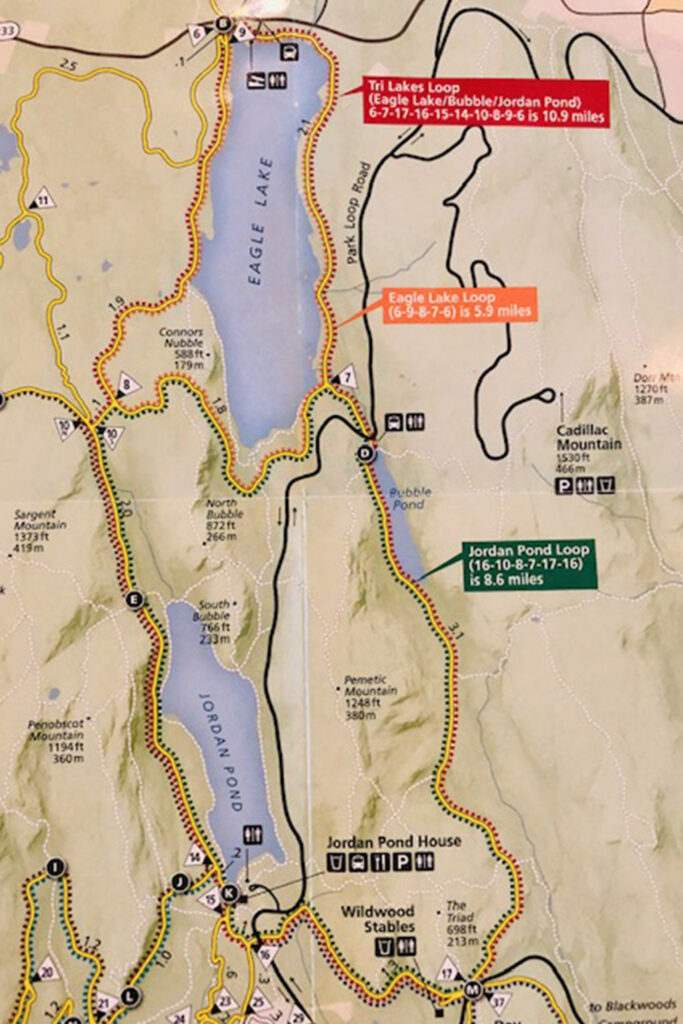
Now, let me highlight some of the must-sees along the Carriage Road! I arrived at the Bar Harbor Bicycle at 9 am, picked up my reserved Cross/Gravel bike and lock, got simple verbal directions to the carriage road entrance at Eagle Lake, and took off.
One of the most popular rides/walks along the carriage roads is the loop around Eagle Lake. As I cycled along the western leg of the loop, winding through hemlocks and firs, I discovered beautiful views of the lake below.
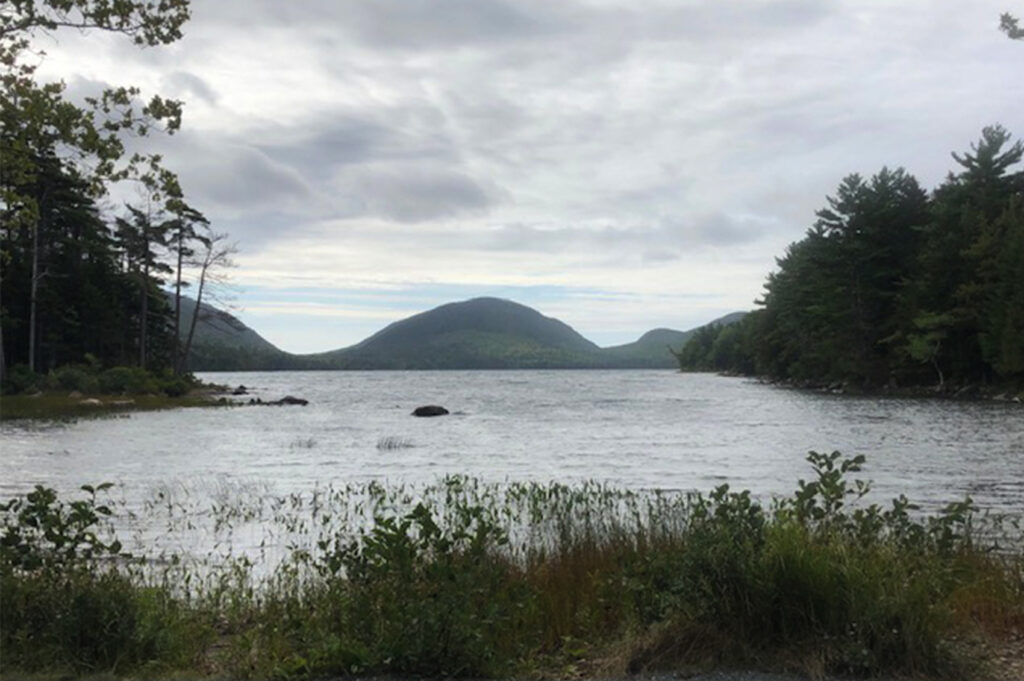
Then I cycled southward along the west shore of Jordan Pond rather than completing the entire Eagle Lake loop. After tearing down a long hill, you arrive at the southern tip of the Pond where the Jordan Stream enters out into the bay. Jordan Stream is a popular spot with families as it is a short walk from Jordan Pond House, the Park’s only restaurant.
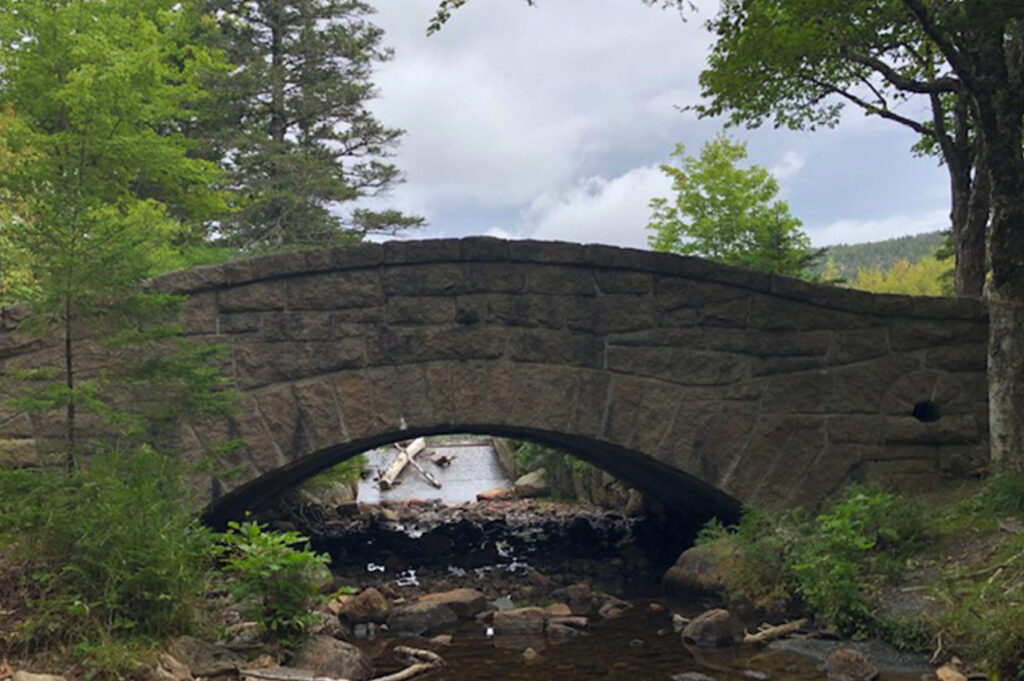
I continued cycling, alongside the stream, I witnessed some of the most scenic stretches in the Park. The road crosses into private land at the Cobblestone Bridge. Cyclists are not allowed on the private land. So, I headed back to Jordan Pond House, where I locked up the bike and set off for a hike!
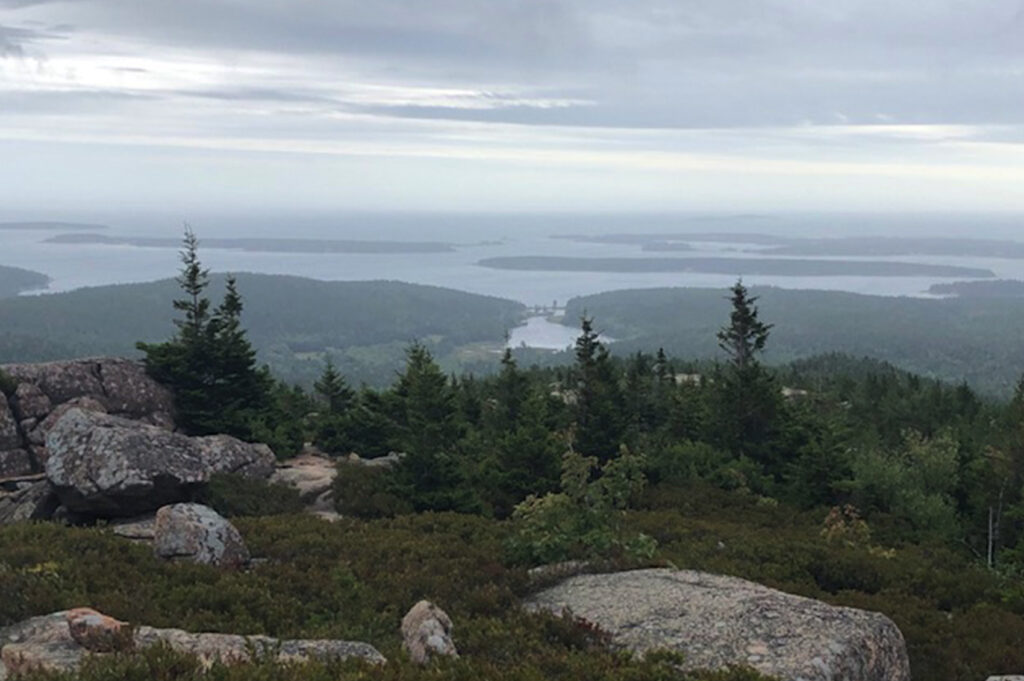
My hike up the Penobscot Mountain was my first hike in the Park and also the most strenuous, as it included one of the “ladder trails.” It was an excellent 2-hr hike to fit in after cycling and before the forecasted rain. Unfortunately, after a wrong turn, I lost an hour, and consequently arrived wet and cold for my tea and popovers at Pond House!
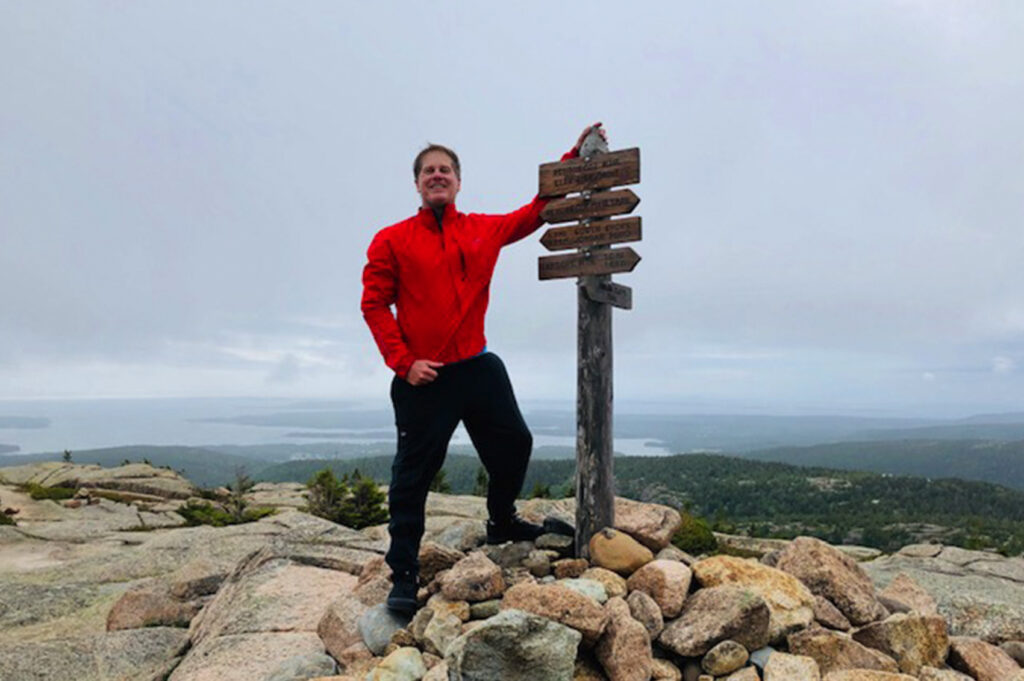
The Man conquers the Summit of Peubscot Mountain and his first Acadia ‘ladder trail’
Never the less it was as a great day, and feeling rejuvenated after my tea and popovers I hopped on the Explorer bus with my bike. Dropped off my bike at the Bike Shop and headed to my B&B to enjoy and long, hot bath in a clawfoot tub before dinner.
The Loop Road
The Park Loop Road is the main road into the Park and to most of the attractions.
Despite congestion at peak times, the drive is always beautiful, but as I’ve mentioned before, you must really cycle this road and explore the park properly. The road opened in 1950 and is approximately 27 miles long, mostly one-way, limited access, auto-route that winds around the eastern section of the Park. It is considered one of the most beautiful drives in America. Whether you choose to drive, cycle and or take the Explorer bus, start early and don’t miss these stops!
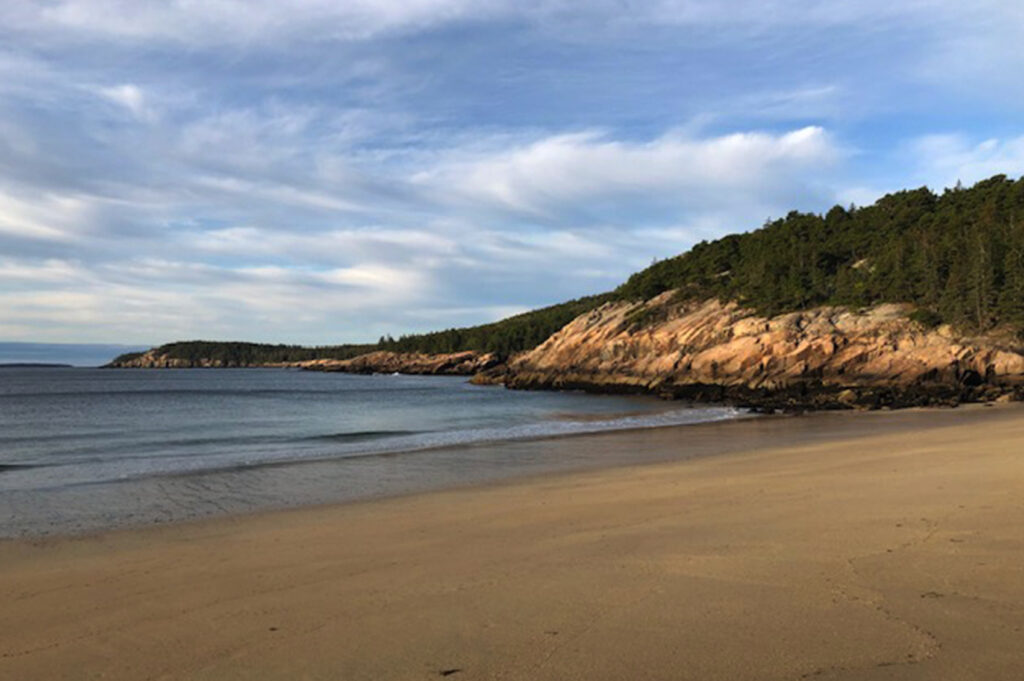
The Sand Beach and The Beehive
The Sand Beach and The Beehive is one of the most popular spots on Mount Desert Island. Beware of the chilly water temperature no matter when you go! From here, you can see hikers ascending the ladder trail, often vertical, like bees on a hive, hence the nickname. I was one of those bees, which you’ll hear about in an upcoming blog. Also, you can access the Ocean Trail, which heads south along the coast to Thunder Hole, Monument Cove, and Otter Cliffs.
The Ocean Trail
The Ocean Trail extends 2 miles along the coast with many scenic overlook points. Enjoy it as far as you like. I did a warm-up walk to Thunder Hole before my Beehive climb. The Hole is at its best about two hours before high tide on days with high seas, when the water rushes in to “the hole” (i.e., cave) creating a massive air pocket that explodes in a loud boom. My encounter was at mid-tide when the “thunder” was more of a low-pitched belch.
Bubble Rock
Bubble Rock appears to be a balancing act at odds with the natural laws of the universe; this 14-ton boulder has been like this for hundreds of years. A short trail to the Rock not only offers an up-close view of this phenomenon but, even better, a fantastic view of Jordan Pond.
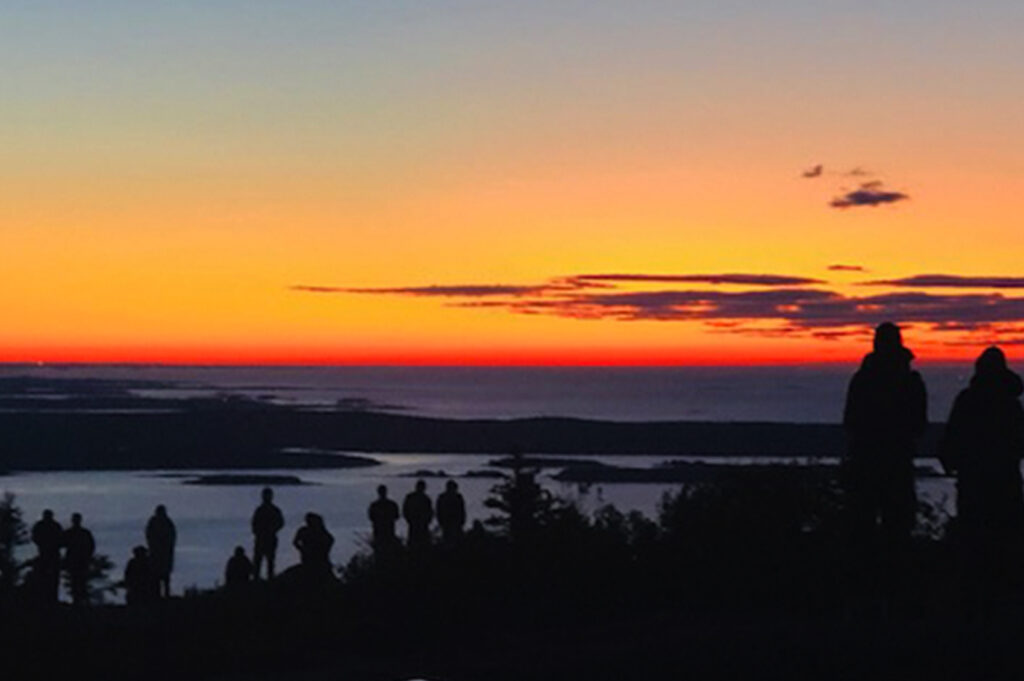
Cadillac Mountain
Cadillac Mountain is where I ended with my sunrise experience atop this highest peak of the Atlantic seacoast. It’s definitely worth getting up early to enjoy the experience. It will take you just over an hour to hike the 2 miles in the dark, so prepare accordingly. You can drive to the summit, but parking is limited.
The views are always incredible no matter what time of day you decide to go. Just remember whatever mode of transportation you choose make sure you are well prepared.
Let’s get out there and Carpe Diem!
Peter
For more Acadia adventures check out Peter’s 7 Must do Travel Tips for Acadia National Park.

